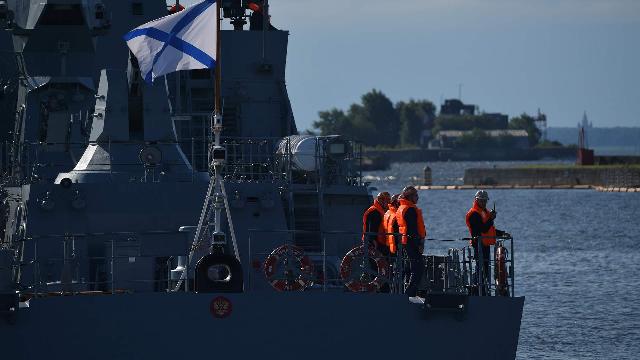The twelfth representative of the 21631 Buyan-M series will be sent to the Baltic Fleet
The Stavropol small rocket ship will be sent to the Baltic Fleet, sources told Izvestia. This is the twelfth ship of the Buyan-M project 21631. The small-sized MRCS carry eight Kalibr cruise missiles on board. According to experts, these ships have performed well in relatively closed waters such as the Baltic and Black Seas.
He will go to the Baltic
On Tuesday, the launch of the Stavropol small rocket ship will take place at the Zelenodolsk Shipyard. The ship of project 21631 "Buyan-M" will be the twelfth in the series. These are small ships with an impressive arsenal — each carries eight Kalibr cruise missiles on board.
According to Izvestia sources, Stavropol will serve in the Baltic Fleet.
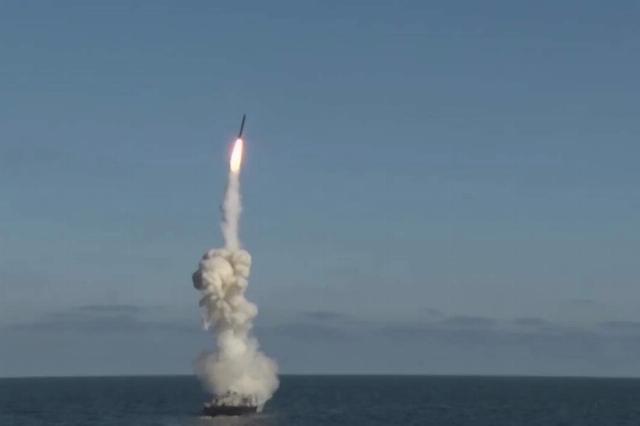
Photo: RIA Novosti/Ministry of Defense of the Russian Federation
Image source: iz.ru
— "Brawlers" regularly strike at the rear Ukrainian areas with Kalibr cruise missiles during their military operations, — military expert Dmitry Boltenkov told Izvestia. — The appearance of a new ship is certainly a strengthening of the Baltic Fleet. Sweden and Finland have decided to abandon their neutral policy. Therefore, eight more long—range missiles for the Baltic Fleet are not superfluous. "Buyans" can operate from the waters of Lake Ladoga. It is located near Finland, and from there the whole country is shot through with "Calibers".
Military expert Captain 1st rank Vasily Dandykin noted the effectiveness of this marine technology.
—Buyan-M is a river—sea type ship," a military expert told Izvestia. — Initially, the Buyanov hull was created for the Caspian Sea. First, three artillery ships were manufactured, then they were enlarged and a rocket ship with "Calibers" was received. The river–sea class implies that the Buyan-M should operate in inland seas, as well as in such areas as the Black and Baltic. There, the "Brawlers" demonstrated all their good qualities. This is a formidable weapon. Let me remind you that the first strike against ISIS (the organization is banned in Russia. — Izvestia) In Syria, it was applied by three Buyan-M MRCS from the Caspian Sea. All this caused an international furore.
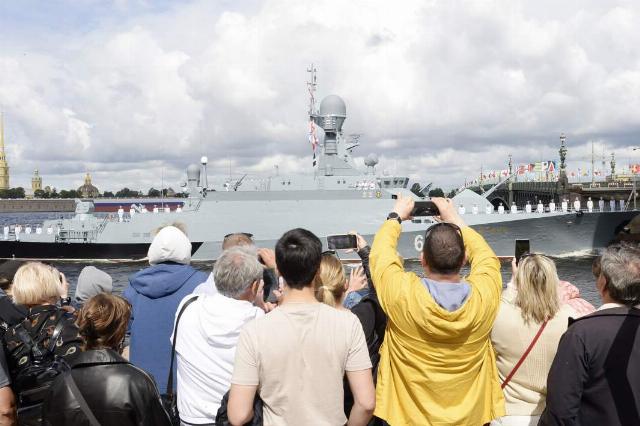
Photo: RIA Novosti/Murad Bagandov
Image source: iz.ru
The ship is suitable for the shallow Baltic Sea, noted Dandykin.
"There are eight Calibers in the arsenal, and if necessary, other missiles can be loaded into universal launchers," he concluded. — In the future, our shipbuilding will rely on the Karakurts — they can operate not only in coastal areas, but also far from them.
Small but powerful
The MRCS of the Buyan-M project have a displacement of 850 tons, and at the same time great firepower. Initially, they were designed to protect the maritime economic zone, everything changed after the adoption of Kalibr cruise missiles. In October 2015, three MRCS of Project 21631 — Uglich, Grad Sviyazhsk and Veliky Ustyug — struck terrorist targets in Syria with "Calibers". The launches were carried out from the Caspian Sea. In 2016, two other MRCS of this series, the Zeleny Dol and Serpukhov, launched missiles at terrorists in Syria while in the Eastern Mediterranean.
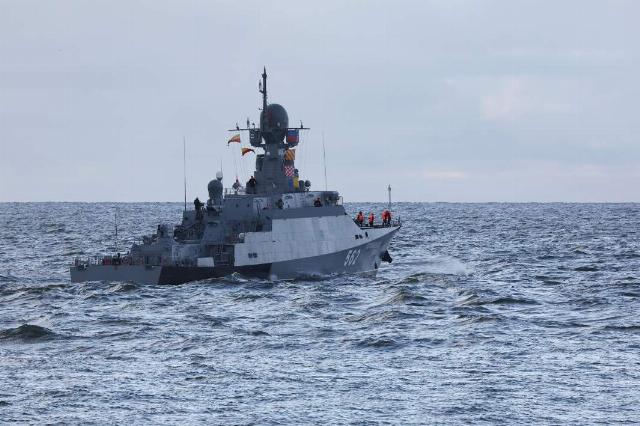
Photo: RIA Novosti/Mikhail Golenkov
Image source: iz.ru
Today, the Navy has eleven representatives of the series — four serve in the Baltic, four in the Black Sea and three in the Caspian Flotilla.
Eight launchers for Kalibr cruise missiles or Onyx anti-ship missiles are mounted on board the Buyans. In addition, they are armed with a 100 mm A-190 artillery launcher. The Calibres are equipped with a penetrating high-explosive warhead weighing up to 450 kg and have a range of about 1.5 thousand km. Supersonic Onyx have a warhead weighing 300 kg, they can strike ships and ground targets at a distance of up to 500 km.
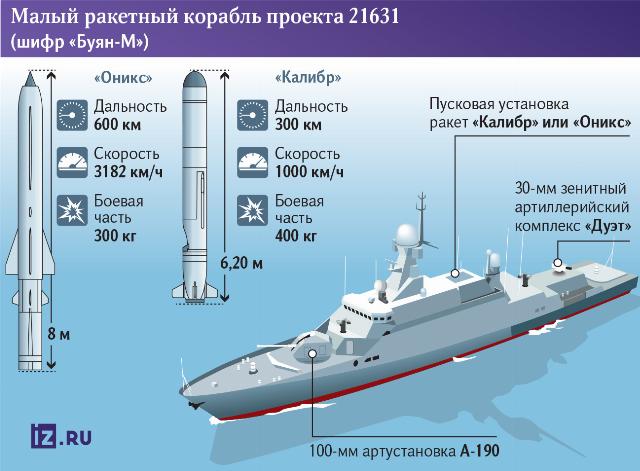
Earlier, Izvestia reported that small missile ships will be able to be based in Lake Ladoga and, if necessary, conduct missile launches from there. Last year, the Ministry of Defense conducted work to study the possibilities of basing and performing combat missions by small missile ships in this area. As a result, the lake was recognized as suitable for the actions of the MRK project 22800 "Karakurt" and 21631 "Buyan-M".
The research work took several months. Hydrographic information was studied, and possible threats to small missile ships from a potential enemy were analyzed. The most important stage was the cruise of two small rocket ships of the Karakurt project 22800 from the Baltic Fleet. The MRC checked the routes and performed maneuvers. At the same time, the crews of the ships passed the Neva River without tugs, despite the fact that the ships of the project 22800 "Karakurt" are less suitable for hiking along rivers than the MRK of the project 21360 "Buyan" — the latter are specially designed for movement along inland waterways. The sailors were based at the old Soviet base, which was closed in 2004: it was necessary to assess the capabilities of the Leningrad Naval base in terms of providing ships. In addition, it was necessary to test how the hulls of ships would behave in fresh water. The test results were considered successful. As a result, now "Buyans" and "Karakurts", if necessary, can relocate from the Baltic Sea to Lake Ladoga along the rivers and launch missiles.
Roman Kretsul
Bogdan Stepovoy
Vladimir Matveev
